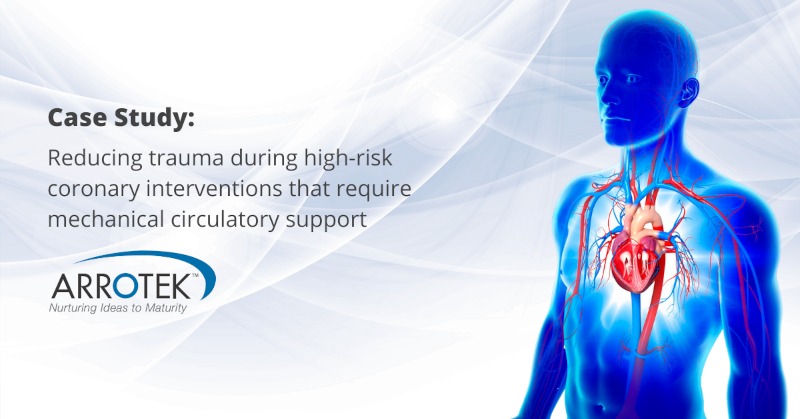
The treatment of coronary heart disease has advanced rapidly over recent decades. For example, in patients deemed unsuitable for cardiac surgery, the introduction of percutaneous procedures significantly reduced mortality rates. Further advances in minimally invasive approaches have improved patient outcomes even further. This includes high-risk percutaneous coronary interventions (PCI), where interventional cardiologists treat extreme cases.
Mechanical circulatory support is a crucial component of many high-risk PCI procedures to maintain blood flow. This is an evolving area of cardiac treatments.
The success of these treatments is often dependent on vascular access and closure. However, in many situations, vascular access and closure are achieved through cannulas or sheaths that can be up to 24 Fr.
The introduction of low-profile sheaths in these devices will result in reduced access site trauma while also allowing the use of smaller heart pumps.
Our client engaged Arrotek to help in the development of new medical device technologies to achieve these goals. These technologies allow for access and closure via a small-bore sheath to enable smaller, atraumatic mechanical circulatory support.
Note: the subject of this case study is an ongoing project that we continue to work on here at Arrotek. However, we have made significant advances in medical device technologies to date.
Project Objectives
There were two main strands to this project. The first involved the development of a small heart pump for use in high-risk PCI procedures. The second involved developing the accessory devices and components for this heart pump, including the low-profile placement sheath.
What We Did
We came on board with the project at the concept design stage, and we implemented our six-step design process. This process includes the creation of concepts and solutions after the requirements are defined. We then progressed through the development stage, researching materials and manufacturing methods, and producing 3D CAD models. Design for Manufacturing (DFM) and Design for Assembly (DFA) processes were introduced during these early stages.
We then moved to Stage 1 Prototype development for bench testing and evaluation before further refining the design, incorporating DFM and DFA considerations.
The production of a Stage 2 Prototype followed, with that prototype being used for in-vivo and in-vitro studies. The production of that prototype involved the fabrication of customised equipment and tooling to manufacture the initial unit builds.
Results
The Stage 2 Prototype was successfully produced and, at the time of writing, is currently going through studies. This prototype includes a dual lumen access sheath with a low-profile atraumatic tip that was manufactured to minimise flash and production inconsistencies.
Furthermore, significant FDA regulatory milestones have been achieved.
Next Steps
Further development of the device, including the introduction of braiding, will take place over the coming months up to pilot and then full-scale production once CE and FDA approval is granted.

